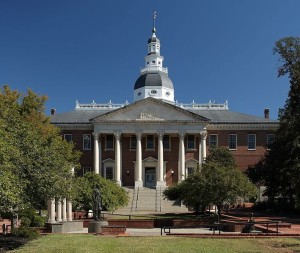What We’re Watching in the 2017 Legislative Session
Lawmakers began considering hundreds of bills as the Maryland General Assembly began its 90-day legislative session this week. At least a handful of these bills have the potential to affect prosperity for average Marylanders for years to come. Here are a few key issues we’ll be watching this year.
Earned sick days. Everyone gets sick at some point but more than 700,000 Marylanders still can’t take time off work to go to a doctor or care for a sick child. It’s past time that Maryland follow the lead of other states and cities and ensure that all Marylanders can earn sick leave.
Paid sick leave ensures that workers can afford to take time off work when their sick, without losing income they need to pay for things like utilities and food. This not only benefits those workers; paid leave has been shown to improve public health, which can reduce health care costs, and benefit employers through reduced turnover and increased productivity.
There are expected to be two versions of a pick sick days bill: the well-tested compromise version that passed the House of Delegates last year, and a less generous version just proposed by Gov. Larry Hogan. While final details of the governor’s proposal have not yet been shared, it appears that his proposal would leave thousands of workers out in the (common) cold.
Expanding the EITC. The Earned Income Tax Credit is a common-sense tax break that helps people who work but struggle to get by on low wages. However, the current law leaves behind workers who aren’t raising children and young people just getting a start in the workforce – even if they have very low incomes. Expanding the credit in Maryland will enable 355,000 low-wage workers to keep more of what they earn.
Research on the federal EITC has shown that the income that low-income working families receive from these credits is linked to improvements in maternal and infant health, better school performance among children, higher college enrollment, and increased work effort and earnings when the children reach adulthood. We also know that EITC dollars don’t stay in people’s pockets—they immediately spend those dollars in the local community. It makes no sense to continue taxing certain people further into poverty simply because they don’t claim a child on their tax forms.
State finances. Governor Hogan has until Jan. 18 to submit his budget proposal to the legislature, but it is likely, based on the latest state fiscal estimates, that he will propose some cuts to state services. We’ll detail how he decides to handle the budget shortfall once it is released.
There are better alternatives to a cuts-only approach. Policymakers should call on large corporations and our state’s wealthiest residents to pay their fair share. In Maryland’s current tax system, those who have the most are asked to pay the least. Maryland families that take home less than $111,000 a year—the bottom 80 percent of the state—pay between 9.5 percent and 10.3 percent of their income in state and local taxes. Meanwhile, the wealthiest 1 percent (those making more than $481,000) pay only 6.7 percent of their income in taxes. This tax structure is a recipe for slow revenue growth and disinvestment in the building blocks of our economy at a time when only those at the top are seeing their incomes go up.
New tax breaks. Last year there were multiple proposals that would have provided additional tax breaks to businesses and the wealthy, at the cost of the public services we all rely on. Thankfully, none advanced – aside from a special tax break for defense contractor Northrop Grumman. The budget shortfall would have been even worse if lawmakers had cut taxes for other large corporations or very wealthy individuals.
However, that doesn’t mean these misguided approaches are going away. Last week, Gov. Hogan announced he plans to bring back a tweaked version of the manufacturing tax credit bill he proposed in 2016, and other proposals could emerge in the coming weeks. The 2016 manufacturing tax bill would have created an uneven playing field for businesses and set a bad precedent by exempting some businesses from paying their fair share for the services we all benefit from. The governor’s approach was modeled after activities in other states that have created very few jobs at very high cost to taxpayers. We’ll see what changes he brings to the bill this year.
Prescription drug price transparency. Maryland could take one small step this year that could help reduce health care costs in the long term. Prescription drug prices are among the biggest drivers of health care costs, but little is known about how drug companies set those prices. Proposed legislation will require drug manufacturers to disclose basic information about how they set their prices, and allow Maryland’s attorney general to take action in the event of price gouging.
Details on legislative proposals are few so far, but we will also closely watch the debate over bail reform. Maryland’s current system of cash bail places undue burdens on defendants who are not flight risks but can’t afford even modest amounts of bail. Because they end up stuck in jail while awaiting trial, people struggling to make ends meet often lose their jobs or even their homes, regardless of whether they are ultimately found guilty. This perpetuates cycles of poverty and destroys communities, while providing little public safety benefit. Maryland should reform its bail system to take into account people’s ability to pay, in addition to the usual considerations such as flight risk.
